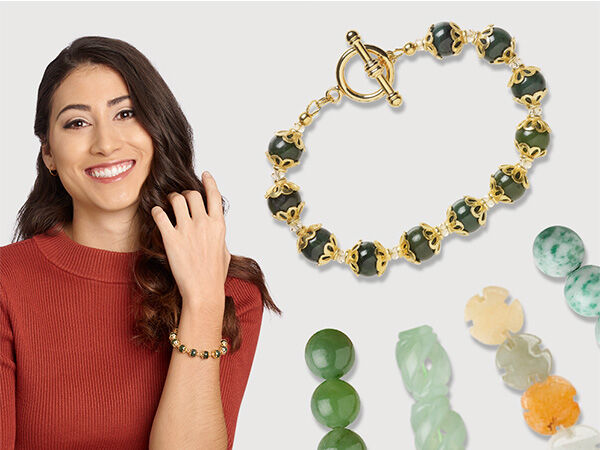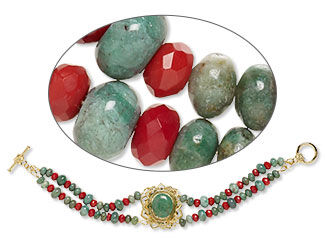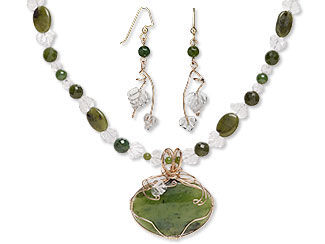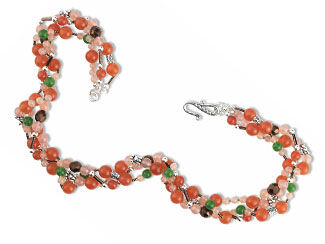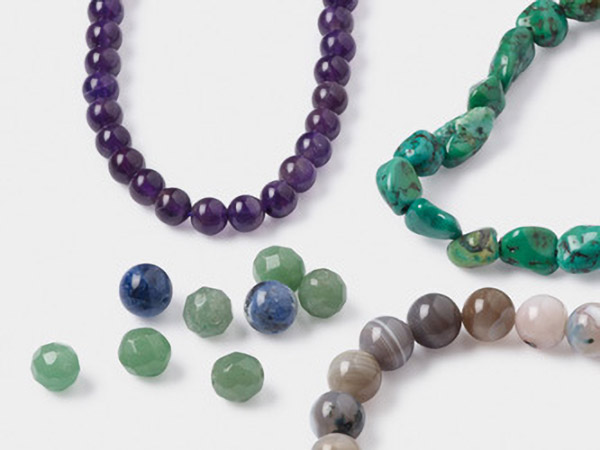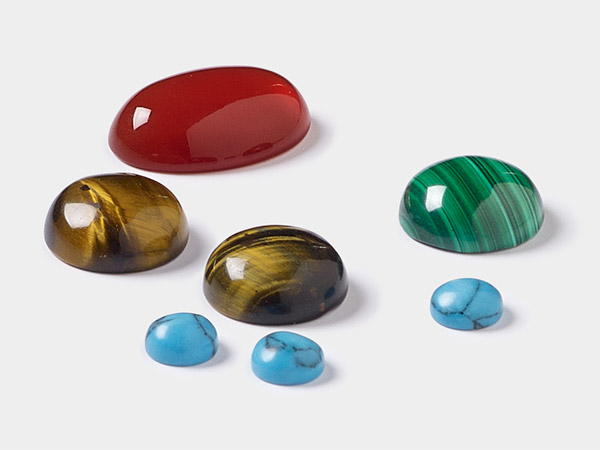The Unlocked Mysteries of Jade: Exploring the Fascinating Jades of the World
Jades of the World
The Chinese people discovered jade thousands of years ago; since then, it has held a very sacred place in their culture. In the East, jade is not just a simple jewelry component. Instead, it is regarded as a gemstone that has become synonymous with the heart and soul of the universe. Mythically, highly valued jade was said to be moonlight in rock form. The Chinese history of jade is as old as the Chinese civilization itself. The earliest indication of carved jade objects in China can be traced back to the Neolithic period around 5000 B.C., making intimate knowledge of jade more than 7,000 years old. The word for jade is "yu" and it is so entwined in the Chinese culture that it is viewed as near priceless. As the old saying goes, "You can put a price on gold, but you cannot put a price on jade."
The Chinese are not alone in their reverence for jade. The Maoris of New Zealand used jade in place of metal; their jade weapons and tools actually hold a better edge than iron. Jade was considered the real treasure of the Mayan and Aztec civilizations, coming before gold and emeralds in value.
There are many green gemstones, but there are only two true jades: jadeite and nephrite. They have different characteristics that help to differentiate them but there are always exceptions to the rule. Jade is a term used both for nephrite and jadeite. Nephrite, the ancient emerald-green jade of China, has been used in adornment for some 7,000 years. Jadeite, imported over the last 250 years from Burma, is a greenish-grey stone in color. Both jade forms have been found and used in regions of Europe and Central America. These minerals are so similar in appearance that they have often been mistaken for each other. Gemologists can tell them apart by performing tests measuring the reflective index and viewing the absorption spectra of the two stones. Because nephrite is more intense in color, it is considered a true form of jade, is often more desirable and brings higher prices.
The Cultural Power of Jade
Jade, since the beginning of its use, has been considered to be the essence of spirit, heaven and earth and was called Imperial Jade by both common people and various emperors and nobility. Today, perhaps more personally than any other culture, the Chinese people continue to love jade not only for its beauty, but also for its importance in defining the meaning of their culture and shaping their humanity.
The ancient Chinese philosopher Confucius, quoted during his lifetime, said that the merits and qualities of a truly wise man were to parallel the appearances of noblest jade, saying:
''The wise have likened jade to virtue. For the wise, its polish and brilliancy represent the whole of purity. Jade's perfect compactness and extreme hardness represent the sureness of intelligence. The angles, which do not cut although they seem sharp, represent justice. The pure and prolonged sound, which is often heard when one strikes it during carving, represents melody and harmony. Its flawless color represents loyalty, and its interior fractures that always reveal themselves through the transparency, call to mind sincerity of character. Jade's iridescent brightness represents heaven, and its admirable substance, born of mountain and of water, represents the earth. Used alone without ornamentation, jade represents chastity. The fact that jade is without price within the wide world represents that truth transcends the ages. When thinking of a wise man, his merits are to be likened to the appearances of noble jade.''
Indeed, the shy jade gemstone represents the Eastern ideal of modesty and grace as the most valuable qualities of all. Jade has been, and is now, very popular around the world because it is very hard, precious and beautiful when carved or polished. Before Columbus ever crossed the Pacific, Central Americans valued the rare gemstone higher than gold, and used it for trade and religious artifacts.
Ancient European people tended to limit the use of jade to making axes, leather scrapers and weapons, making their jade culture far less refined than the ancient Chinese jade culture. Although no civilization can ever compete with the extent of intricacy, beauty and skill that the Chinese used to carve jade, many cultures around the world created truly spectacular pieces.
The Quality and Colors of Jades
The beauty of jades are unsurpassed with their semi-translucent appearance and suspended color.
Jadeite is the harder stone, a 6.5 to 7 on the Mohs scale, and usually a brighter green; however, it also comes in lavender, red-orange yellow, brown, white, black and gray. Imperial jade (jadeite) is a vivid bright green and can command a price greater than diamonds. Nephrite, the softer stone at 6 to 6.5 on the Mohs scale, is usually a darker green and (in some cases) has dark spots that will identify it as nephrite (as they do not appear in jadeite).
The most valuable form of jade, known as Imperial Jade from Myanmar (Burma), is an emerald green color. Jades also appear in mottled green and white, and the rarer colors of yellow, pink, purple and black. The ranges of greens are light to dark, creamy, greyish and also white. A leek green variety, called ''Russian jade,'' is found near Lake Baikal in Russia.
Carving in jade is an ancient art in many cultures, and many of the carvings have special meaning. The Buddha of prosperity, tossing coins above his head, is carved in many gemstones, but when carved in jade it brings the most luck and prosperity. Jade also has a long history in jewelry. Traditionally, it is worn by itself or in combination with gold, pearls and diamonds. It is worn for good luck as well as carved, cut and shaped for adornment.
Why are jades, such relatively soft gemstones, so popular for carving? That's because of the difference between a stone's "hardness" and its "toughness." Hardness measures how easily a stone is scratched. The hardest gem is diamond, scoring a 10 on the Mohs hardness scale. Toughness measures how easily a stone breaks when struck. Jade is made up of interlocking crystals that create a tightly intergrown, compact mass that bonds together and resists breaking. This is how jade earns the highest rating, "exceptional toughness," where diamond is exceptional only in certain directions--if struck along a cleavage plane, a diamond can shatter. The color of a particular jade is the most important factor, but translucency and texture also determine price. Intense colors of jade are currently very desirable and the green varieties are the most popular color of jade. Heat treatments are used to lighten or intensify the color of jade. Semi-transparent to translucent jade is the most desirable and valuable form of jade, so forgeries can happen. Brightly colored dyed quartz and jasper stones are sometimes sold as jade to unwary or unknowledgeable buyers.
When a jade buyer looks at a piece of rough jade at the market, the only visible sign of the stone's quality shows through a small window polished on the stone. The buyer takes a risk on the rest of the rough stone. The buyer can also wet the rough stone trying to determine the color, but none of these tests are a sure sign of what lies beneath. That requires a trusted gemologist or jeweler.
Trends in Jade Jewelry
Jade is more popular than ever and the demand for nephrite, jadeite and other forms of jade shows no sign of slowing down. The trend for shout-out-loud color in jewelry is a wonderful way to use the candy-like colors of natural and vibrantly delicious dyed jade gemstone beads.
The increase of wearing jewelry in a mix-and-match fashion is a keen way to include culture, heritage and ecological friendliness in modern accessories. Designers are using brightly colored jade beads to answer their color needs in jewelry designs. Feminine, eclectic and romantic pieces that incorporate jade are expected to be the most sought-after accessories.
Jade Substitutes
There are a few jade substitutes; these gemstones are beautiful in their own right but should not be confused with true jade.
Serpentine ranges in toughness from 2.5 to 6 on the Mohs scale and is used frequently in carvings that end up looking very much like jade. You can scratch most serpentine, so a scratch test can be used to tell it apart from jade. However, Booyo precious serpentine can be as tough as nephrite jade, so it is the exception to the rule. Also--be aware that scratching is a destructive test so use it wisely and in a non-visible area.
Chrysoprase chalcedony sometimes achieves the popular "apple green" color of jadeite, making it a desirable gem.
Green hydrogrossular garnet is a fairly common jade substitute.
Have a question regarding this project? Email Customer Service.
Copyright Permissions
All works of authorship (articles, videos, tutorials and other creative works) are from the Fire Mountain Gems and Beads® Collection, and permission to copy is granted for non-commercial educational purposes only. All other reproduction requires written permission. For more information, please email copyrightpermission@firemtn.com.
**Please note that all metaphysical or healing properties listed are collected from various sources. This information is offered as a service and not meant to treat medical conditions. Fire Mountain Gems and Beads® does not guarantee the validity of any of these statements.
